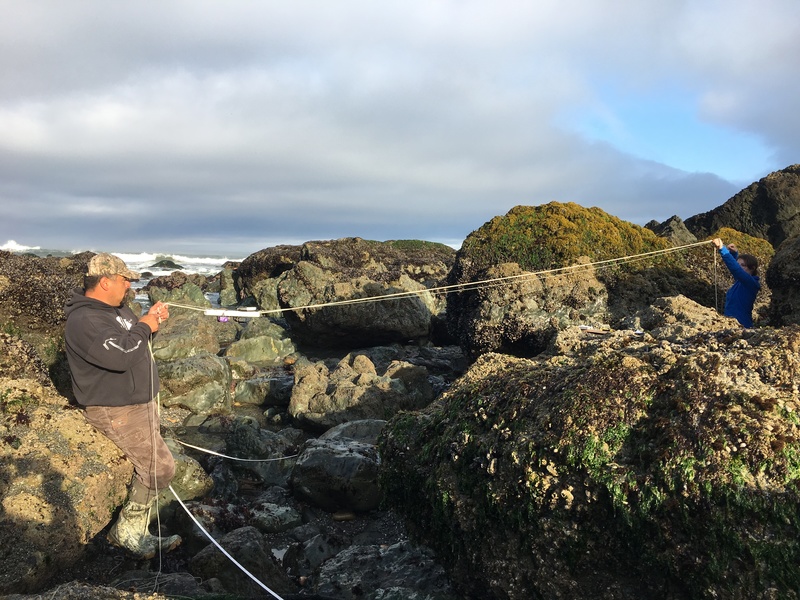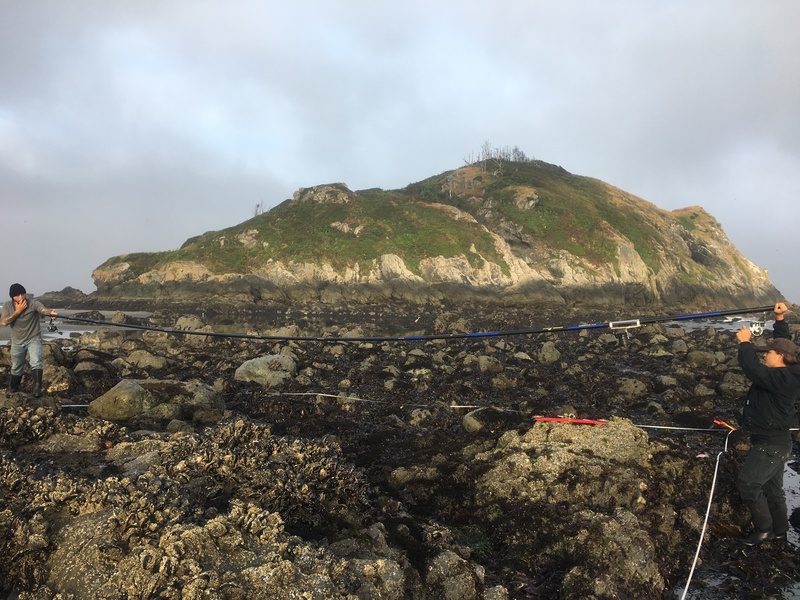The rocky intertidal is an iconic seascape of great cultural importance to California's Indigenous nations, which also drives a large ecotourism economy for the state. Unfortunately, because these important habitats exist at the land-sea interface, they are particularly susceptible to the impacts of sea level rise (SLR).
The TIDES project utilizes imaging techniques to create 3D models, which capture hundreds of square meters of rocky intertidal habitats. This method, founded by Scripps Institution of Oceanography, UC San Diego, allows us to visualize and study intertidal communities at unprecedented scales. Tolowa Dee-ni' Nation, a Native American Tribal Government in northern California, is a foundational partner of the TIDES project, and is currently using this new technology in combination with traditional knowledge to improve conservation of their shorelines in the face of a changing climate.
We have developed a low-cost and easily transferable methodology that enables large-scale imaging of the rocky intertidal that provides robust results. A high-resolution camera suspended on a hand-operated pulley system captures thousands of continuous images that are then stitched together using commercially available photogrammetric software. Reconstructed 3D models enable an in-depth immersive visualization experience, data extraction and analysis of entire intertidal communities on an unprecedented scale.
In preparation for using this method in the rocky intertidal habitat, we researched what we could use as the pully system for the camera. At first it consisted of rope, some PVC pipe and a lot of coordination and tension on the rope. Plus your arms were beyond sore after surveying an entire 9m x 33m plot.

We quickly realized that this method was not sustainable for the long term and luckily we came across the carbon fiber poles in the Carp Gangster pole kit and realized they'd be perfect!
You can find them here in the Public Lab store:
https://store.publiclab.org/collections/frontpage/products/pole-mapping-kit?variant=1259641040
We use 3 sets and only the 3 largest poles (9 poles in total, end to end) to fashion a long track for the camera to travel on that spans across the 9m plot. We then attached fishing reels to each end of the pole track and created a cage for the camera to be mounted on. The line from the reels are then attached to the cage and as the camera is pulled back and forth as it is capturing images every second.
->The photo below shows our newest cage that runs smoother over the poles.<-

Above photo shows the rig in action at one of our plots.
The poles are lightweight, but strong and generally create a smooth track for the camera to travel on.
Once the images are stitched together (6,000-10,000) they create a 3D model that we can then extract species data and identification, add indigenous language to, and create fly-through movies. The image below is one of our test plots, much smaller than the site plots, after rendering into a 3D model.
We know that these poles are used for mounting cameras on one end to get aerial photographs and were created for carp fishing (hence, Carp Gangsters), but we have found yet another use for them. If you're interested in using them in a similar way, please reach out and we'd be happy to answer any questions.

5 Comments
Using the fishing reels to move the camera rig back and forth is brilliant. And the image from your test plot is fascinating! Thanks for sharing this @RosaL
Thanks @bhamster! It took some trial and error, but I'm really happy with how it turned out!
Reply to this comment...
Log in to comment
Such important, clever work you guys are doing. The result is astounding; what a beautiful image!
Reply to this comment...
Log in to comment
@RosaL Blown away by this critical tribal community work! Can't wait to hear updates from summer 2021.
Reply to this comment...
Log in to comment
These are so awesome. Have you all been able to get out again this summer?
Is this a question? Click here to post it to the Questions page.
Reply to this comment...
Log in to comment
Login to comment.